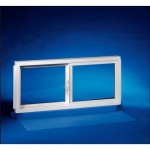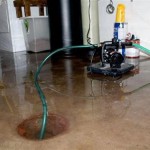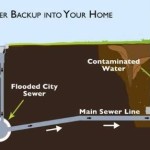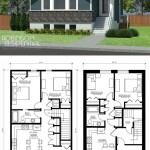How Much Does It Cost to Install a Sump Pump in a Basement?
The installation of a sump pump in a basement is a proactive measure to prevent water damage caused by flooding or groundwater seepage. Determining the cost of such an installation necessitates considering various factors, including the type of sump pump, the complexity of the installation, and regional labor rates. This article delves into the intricacies of sump pump installation costs, providing a comprehensive overview to assist homeowners in budgeting for this essential home improvement.
Factors Influencing Sump Pump Installation Costs
Several elements contribute to the overall cost of installing a sump pump. These factors range from the basic equipment needed to the specific site conditions of the basement itself. A thorough understanding of these factors is crucial for accurate cost estimation.
Type of Sump Pump: There are two primary types of sump pumps: pedestal and submersible. Pedestal pumps are positioned above the sump pit, with a hose extending into the water. They are generally less expensive to purchase, typically ranging from $50 to $200. Submersible pumps, on the other hand, are fully immersed in the sump pit. These pumps are generally more powerful and quieter than pedestal pumps, but they come at a higher cost, usually between $100 and $400. The chosen type will significantly impact the initial equipment expense.
Sump Pump Features: Beyond the basic type, various features can further influence the pump's price. These include the pump's horsepower (HP), which determines its pumping capacity; the material of construction (cast iron vs. plastic); and the presence of features like automatic shut-off, alarms, and battery backup. Higher horsepower pumps and those with advanced features will naturally cost more.
Installation Complexity: The complexity of the installation process will also affect the overall cost. If the basement already has a sump pit, the installation will be simpler and less expensive. However, if a sump pit needs to be constructed, this will add to the labor and material costs. Factors like the type of flooring, the presence of obstructions (pipes, wires), and the ease of access to the basement all contribute to the complexity of the installation.
Plumbing Requirements: Sump pumps require proper plumbing to discharge the water away from the foundation of the house. The existing plumbing infrastructure and the local codes governing water discharge will dictate the complexity and cost of this part of the installation. If extensive plumbing modifications are required, the cost will increase accordingly. This might involve running a discharge pipe to a nearby storm drain or a designated area of the property.
Electrical Work: Sump pumps require a dedicated electrical circuit. If a suitable electrical outlet is not already present near the sump pit, an electrician will need to install one. This can add significantly to the overall cost, particularly if running new wiring requires opening walls or ceilings. Furthermore, electrical codes often mandate the use of ground fault circuit interrupters (GFCIs) for outlets near water sources, adding to the complexity and expense.
Permits and Inspections: Depending on local building codes and regulations, a permit may be required for the installation of a sump pump. Obtaining a permit typically involves a fee and may also require an inspection of the completed installation. While the permit fee itself is usually relatively small, failing to obtain a required permit can result in fines and delays.
Geographic Location: Labor rates for plumbers and electricians vary significantly depending on the geographic location. Urban areas with a higher cost of living typically have higher labor rates than rural areas. Therefore, the location of the property plays a crucial role in determining the overall cost of the installation.
Contractor Choice: Different contractors will have different pricing structures for their services. It is advisable to obtain multiple quotes from different contractors to ensure a fair and competitive price. Factors to consider when choosing a contractor include their experience, qualifications, insurance coverage, and customer reviews.
Average Cost Breakdown of Sump Pump Installation
To provide a clearer understanding of the costs involved, a breakdown of the typical expenses associated with sump pump installation is presented below. These figures are estimates and may vary depending on the specific circumstances of the installation.
Sump Pump Purchase: As mentioned previously, the cost of the sump pump itself can range from $50 for a basic pedestal pump to $400 or more for a high-end submersible pump with advanced features. The average cost for a suitable sump pump for residential use is typically between $150 and $300.
Sump Pit Installation (if required): If a sump pit needs to be constructed, the cost can range from $100 to $500 or more, depending on the size and material of the pit. Pre-fabricated plastic sump pits are generally less expensive than custom-built concrete pits.
Plumbing Work: The cost of plumbing work can vary depending on the complexity of the installation. Simple installations may only require a few feet of PVC pipe and fittings, costing around $50 to $100. More complex installations that involve running longer discharge lines or connecting to existing plumbing systems can cost several hundred dollars.
Electrical Work: The cost of electrical work can range from $50 to $300 or more, depending on the complexity of the wiring and the need for a new electrical outlet. If running new wiring requires opening walls or ceilings, the cost will be higher.
Labor Costs: Labor costs typically account for a significant portion of the overall installation cost. Plumbers and electricians typically charge an hourly rate for their services, which can range from $50 to $150 per hour, depending on the location and the contractor's experience. The total labor cost will depend on the amount of time required to complete the installation.
Permits and Inspections: The cost of permits and inspections is typically relatively small, ranging from $50 to $100. However, it is essential to factor this cost into the budget and to ensure that all necessary permits are obtained before starting the installation.
Total Installation Cost: Based on these estimates, the total cost of installing a sump pump in a basement can range from $400 to $1,500 or more. A simple installation involving replacing an existing pump in a pre-existing sump pit may cost as little as $400 to $600. A more complex installation that involves constructing a new sump pit, running new plumbing and electrical wiring, and obtaining permits can cost $1,000 or more.
Cost-Saving Strategies for Sump Pump Installation
While sump pump installation represents a vital investment in property protection, there are methods to potentially reduce associated costs without compromising the effectiveness of the system. These strategies encompass careful planning and selection of both equipment and contractors.
Obtain Multiple Quotes: As with any home improvement project, obtaining multiple quotes from different contractors is crucial. This allows for price comparison and ensures that a competitive rate is secured. When comparing quotes, it is important to consider not only the price but also the contractor's experience, qualifications, insurance coverage, and customer reviews.
Choose the Right Type of Sump Pump: Selecting the appropriate type of sump pump for the specific needs of the basement can help to save money. If the basement is only subject to minor seepage, a less expensive pedestal pump may be sufficient. However, if the basement is prone to significant flooding, a more powerful submersible pump may be necessary. Overspending on a pump with features that are not needed should be avoided.
Consider DIY Installation (With Caution): While it is possible to install a sump pump oneself, this is generally not recommended unless one has significant plumbing and electrical experience. Improper installation can lead to malfunctions, leaks, and even electrical hazards. If considering DIY installation, it is essential to thoroughly research the installation process, obtain all necessary permits, and follow all safety precautions. Moreover, it is crucial to understand that DIY installation may void the pump's warranty.
Prepare the Site: Preparing the site before the contractor arrives can sometimes reduce labor costs. This might involve clearing the area around the sump pit, removing any obstructions, and ensuring that the contractor has easy access to the basement. However, it is important to consult with the contractor before undertaking any site preparation to ensure that it is done correctly.
Schedule Installation During Off-Peak Seasons: Demand for plumbers and electricians may fluctuate depending on the time of year. Scheduling the installation during off-peak seasons, such as the late fall or winter, may result in lower labor rates.
Inquire About Rebates and Incentives: Some local governments or utility companies may offer rebates or incentives for installing energy-efficient sump pumps. Inquiring about these programs can potentially offset some of the installation costs.
By carefully considering these factors and adopting cost-saving strategies, homeowners can effectively manage the expenses associated with sump pump installation while ensuring the long-term protection of their basements from water damage.

How Much Does Sump Pump Installation Cost 2024 Guide Forbes Home

How Much Does It Cost To Replace Or Install A Sump Pump Homeserve Usa

How Much Does A Sump Pump Cost To Install Breaking Down Prices 2024 Bob Vila

How Much Does Sump Pump Installation Cost 2024 Guide

How Much Does A Sump Pump Cost To Install Breaking Down Prices 2024 Bob Vila

How Much Does It Cost To Install A Sump Pump

How Much To Install A Sump Pump Elek Plumbing

What Does It Cost To Install A Sump Pump Rcc Waterproofing News

How Much Does Installing A Sump Pump Cost Everything You Need To Know

Sump Pump Installation In Minneapolis Paul Bunyan







